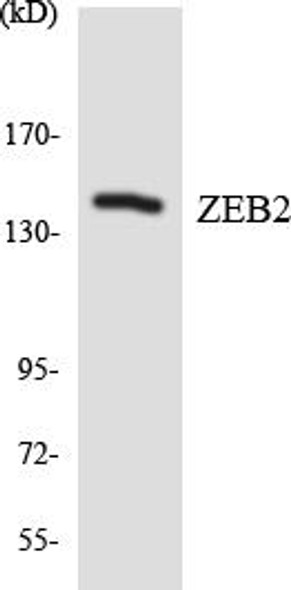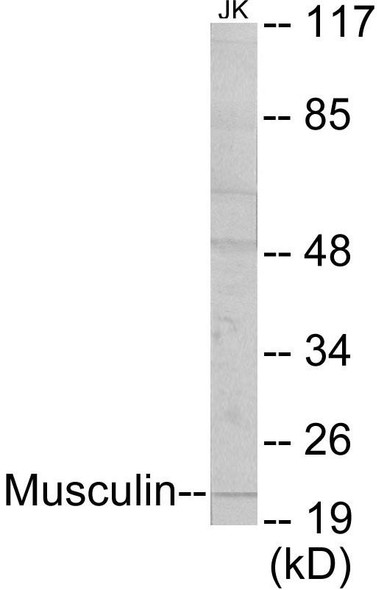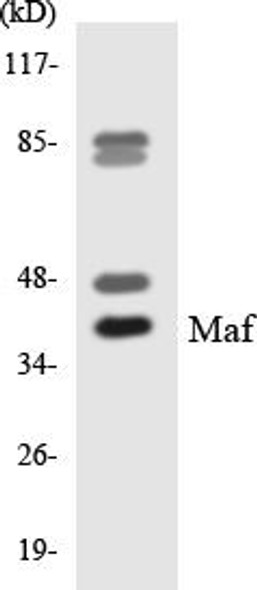Description
THRB Colorimetric Cell-Based ELISA
The THRB Colorimetric Cell-Based ELISA Kit is a cutting-edge tool for studying the thyroid hormone receptor beta (THRB) pathway in cell-based assays. This kit is designed for the accurate and sensitive detection of THRB activity in various cell types, allowing researchers to study the role of THRB in cellular signaling and gene expression.THRB is a key regulator of thyroid hormone signaling, playing a crucial role in metabolic processes, development, and tissue homeostasis. Dysregulation of THRB activity has been linked to a range of diseases, including thyroid disorders, metabolic syndrome, and cancer.
By using the THRB Colorimetric Cell-Based ELISA Kit, researchers can gain valuable insights into the function of THRB and its potential as a therapeutic target for various diseases.This kit offers high specificity and sensitivity, ensuring reliable and reproducible results for a wide range of experimental conditions. With its user-friendly protocol and comprehensive technical support, the THRB Colorimetric Cell-Based ELISA Kit is an essential tool for researchers studying THRB signaling pathways and developing novel therapeutics.
| Product Name: | THRB Colorimetric Cell-Based ELISA |
| Product Code: | CBCAB00970 |
| ELISA Type: | Cell-Based |
| Target: | THRB |
| Reactivity: | Human, Mouse, Rat |
| Dynamic Range: | > 5000 Cells |
| Detection Method: | Colorimetric 450 nmStorage/Stability:4°C/6 Months |
| Format: | 96-Well Microplate |
The THRB Colorimetric Cell-Based ELISA Kit is a convenient, lysate-free, high throughput and sensitive assay kit that can detect THRB protein expression profile in cells. The kit can be used for measuring the relative amounts of THRB in cultured cells as well as screening for the effects that various treatments, inhibitors (ie siRNA or chemicals), or activators have on THRB.
Qualitative determination of THRB concentration is achieved by an indirect ELISA format. In essence, THRB is captured by THRB-specific primary antibodies while the HRP-conjugated secondary antibodies bind the Fc region of the primary antibody. Through this binding, the HRP enzyme conjugated to the secondary antibody can catalyze a colorimetric reaction upon substrate addition. Due to the qualitative nature of the Cell-Based ELISA, multiple normalization methods are needed:
| 1. | A monoclonal antibody specific for human GAPDH is included to serve as an internal positive control in normalizing the target absorbance values. |
| 2. | Following the colorimetric measurement of HRP activity via substrate addition, the Crystal Violet whole-cell staining method may be used to determine cell density. After staining, the results can be analysed by normalizing the absorbance values to cell amounts, by which the plating difference can be adjusted. |
| Database Information: | Gene ID: 2147, UniProt ID: P00734, OMIM: 176930, Unigene: Hs.655207 |
| Gene Symbol: | F2 |
| Sub Type: | None |
| UniProt Protein Function: | Function: Thrombin, which cleaves bonds after Arg and Lys, converts fibrinogen to fibrin and activates factors V, VII, VIII, XIII, and, in complex with thrombomodulin, protein C. Functions in blood homeostasis, inflammation and wound healing. Ref.12 |
| UniProt Protein Details: | Catalytic activity: Selective cleavage of Arg-|-Gly bonds in fibrinogen to form fibrin and release fibrinopeptides A and B. Subcellular location: Secreted › extracellular space. Tissue specificity: Expressed by the liver and secreted in plasma. Post-translational modification: The gamma-carboxyglutamyl residues, which bind calcium ions, result from the carboxylation of glutamyl residues by a microsomal enzyme, the vitamin K-dependent carboxylase. The modified residues are necessary for the calcium-dependent interaction with a negatively charged phospholipid surface, which is essential for the conversion of prothrombin to thrombin. Involvement in Disease: Defects in F2 are the cause of factor II deficiency (FA2D) [ MIM:613679]. It is a very rare blood coagulation disorder characterized by mucocutaneous bleeding symptoms. The severity of the bleeding manifestations correlates with blood factor II levels. Ref.2 Ref.30 Ref.31 Ref.32 Ref.33 Ref.34 Ref.35 Ref.36 Ref.37 Ref.38 Ref.39 Ref.40Genetic variations in F2 may be a cause of susceptibility to ischemic stroke (ISCHSTR) [ MIM:601367]; also known as cerebrovascular accident or cerebral infarction. A stroke is an acute neurologic event leading to death of neural tissue of the brain and resulting in loss of motor, sensory and/or cognitive function. Ischemic strokes, resulting from vascular occlusion, is considered to be a highly complex disease consisting of a group of heterogeneous disorders with multiple genetic and environmental risk factors. Ref.43Defects in F2 are a cause of susceptibility to thrombosis (THR) [ MIM:188050]. It is a multifactorial disorder of hemostasis characterized by abnormal platelet aggregation in response to various agents and recurrent thrombi formation. Note=A common genetic variation in the 3-prime untranslated region of the prothrombin gene is associated with elevated plasma prothrombin levels and an increased risk of venous thrombosis. Ref.32 Ref.41 Pharmaceutical use: The peptide TP508 also known as Chrysalin (Orthologic) could be used to accelerate repair of both soft and hard tissues. Miscellaneous: Prothrombin is activated on the surface of a phospholipid membrane that binds the amino end of prothrombin and factors Va and Xa in Ca-dependent interactions; factor Xa removes the activation peptide and cleaves the remaining part into light and heavy chains. The activation process starts slowly because factor V itself has to be activated by the initial, small amounts of thrombin.It is not known whether 1 or 2 smaller activation peptides, with additional cleavage after Arg-314, are released in natural blood clotting.Thrombin can itself cleave the N-terminal fragment (fragment 1) of the prothrombin, prior to its activation by factor Xa.The cleavage after Arg-198, observed in vitro, does not occur in plasma. Sequence similarities: Belongs to the peptidase S1 family.Contains 1 Gla (gamma-carboxy-glutamate) domain.Contains 2 kringle domains.Contains 1 peptidase S1 domain. |
| NCBI Summary: | Coagulation factor II is proteolytically cleaved to form thrombin in the first step of the coagulation cascade which ultimately results in the stemming of blood loss. F2 also plays a role in maintaining vascular integrity during development and postnatal life. Mutations in F2 leads to various forms of thrombosis and dysprothrombinemia. [provided by RefSeq] |
| UniProt Code: | P00734 |
| NCBI GenInfo Identifier: | 135807 |
| NCBI Gene ID: | 2147 |
| NCBI Accession: | P00734.2 |
| UniProt Secondary Accession: | P00734,Q4QZ40, Q53H04, Q53H06, Q7Z7P3, Q9UCA1, B2R7F7 B4E1A7, |
| UniProt Related Accession: | P00734,Q15253,Q16505,Q69EZ7,Q69EZ8,Q86WA1,Q8TD58 |
| Molecular Weight: | 70,037 Da |
| NCBI Full Name: | Prothrombin |
| NCBI Synonym Full Names: | coagulation factor II (thrombin) |
| NCBI Official Symbol: | F2 |
| NCBI Official Synonym Symbols: | PT |
| NCBI Protein Information: | prothrombin; serine protease; OTTHUMP00000197117; OTTHUMP00000233661; prothrombin B-chain |
| UniProt Protein Name: | Prothrombin |
| UniProt Synonym Protein Names: | Coagulation factor II |
| Protein Family: | Prothrombin |
| UniProt Gene Name: | F2 |
| UniProt Entry Name: | THRB_HUMAN |
| Component | Quantity |
| 96-Well Cell Culture Clear-Bottom Microplate | 2 plates |
| 10X TBS | 24 mL |
| Quenching Buffer | 24 mL |
| Blocking Buffer | 50 mL |
| 15X Wash Buffer | 50 mL |
| Primary Antibody Diluent | 12 mL |
| 100x Anti-Phospho Target Antibody | 60 µL |
| 100x Anti-Target Antibody | 60 µL |
| Anti-GAPDH Antibody | 60 µL |
| HRP-Conjugated Anti-Rabbit IgG Antibody | 12 mL |
| HRP-Conjugated Anti-Mouse IgG Antibody | 12 mL |
| SDS Solution | 12 mL |
| Stop Solution | 24 mL |
| Ready-to-Use Substrate | 12 mL |
| Crystal Violet Solution | 12 mL |
| Adhesive Plate Seals | 2 seals |
The following materials and/or equipment are NOT provided in this kit but are necessary to successfully conduct the experiment:
- Microplate reader able to measure absorbance at 450 nm and/or 595 nm for Crystal Violet Cell Staining (Optional)
- Micropipettes with capability of measuring volumes ranging from 1 µL to 1 ml
- 37% formaldehyde (Sigma Cat# F-8775) or formaldehyde from other sources
- Squirt bottle, manifold dispenser, multichannel pipette reservoir or automated microplate washer
- Graph paper or computer software capable of generating or displaying logarithmic functions
- Absorbent papers or vacuum aspirator
- Test tubes or microfuge tubes capable of storing ≥1 ml
- Poly-L-Lysine (Sigma Cat# P4832 for suspension cells)
- Orbital shaker (optional)
- Deionized or sterile water
*Note: Protocols are specific to each batch/lot. For the correct instructions please follow the protocol included in your kit.
| Step | Procedure |
| 1. | Seed 200 µL of 20,000 adherent cells in culture medium in each well of a 96-well plate. The plates included in the kit are sterile and treated for cell culture. For suspension cells and loosely attached cells, coat the plates with 100 µL of 10 µg/ml Poly-L-Lysine (not included) to each well of a 96-well plate for 30 minutes at 37°C prior to adding cells. |
| 2. | Incubate the cells for overnight at 37°C, 5% CO2. |
| 3. | Treat the cells as desired. |
| 4. | Remove the cell culture medium and rinse with 200 µL of 1x TBS, twice. |
| 5. | Fix the cells by incubating with 100 µL of Fixing Solution for 20 minutes at room temperature. The 4% formaldehyde is used for adherent cells and 8% formaldehyde is used for suspension cells and loosely attached cells. |
| 6. | Remove the Fixing Solution and wash the plate 3 times with 200 µL 1x Wash Buffer for five minutes each time with gentle shaking on the orbital shaker. The plate can be stored at 4°C for a week. |
| 7. | Add 100 µL of Quenching Buffer and incubate for 20 minutes at room temperature. |
| 8. | Wash the plate 3 times with 1x Wash Buffer for 5 minutes each time. |
| 9. | Add 200 µL of Blocking Buffer and incubate for 1 hour at room temperature. |
| 10. | Wash 3 times with 200 µL of 1x Wash Buffer for 5 minutes each time. |
| 11. | Add 50 µL of 1x primary antibodies (Anti-THRB Antibody and/or Anti-GAPDH Antibody) to the corresponding wells, cover with Parafilm and incubate for 16 hours (overnight) at 4°C. If the target expression is known to be high, incubate for 2 hours at room temperature. |
| 12. | Wash 3 times with 200 µL of 1x Wash Buffer for 5 minutes each time. |
| 13. | Add 50 µL of 1x secondary antibodies (HRP-Conjugated AntiRabbit IgG Antibody or HRP-Conjugated Anti-Mouse IgG Antibody) to corresponding wells and incubate for 1.5 hours at room temperature. |
| 14. | Wash 3 times with 200 µL of 1x Wash Buffer for 5 minutes each time. |
| 15. | Add 50 µL of Ready-to-Use Substrate to each well and incubate for 30 minutes at room temperature in the dark. |
| 16. | Add 50 µL of Stop Solution to each well and read OD at 450 nm immediately using the microplate reader. |
(Additional Crystal Violet staining may be performed if desired – details of this may be found in the kit technical manual.)






